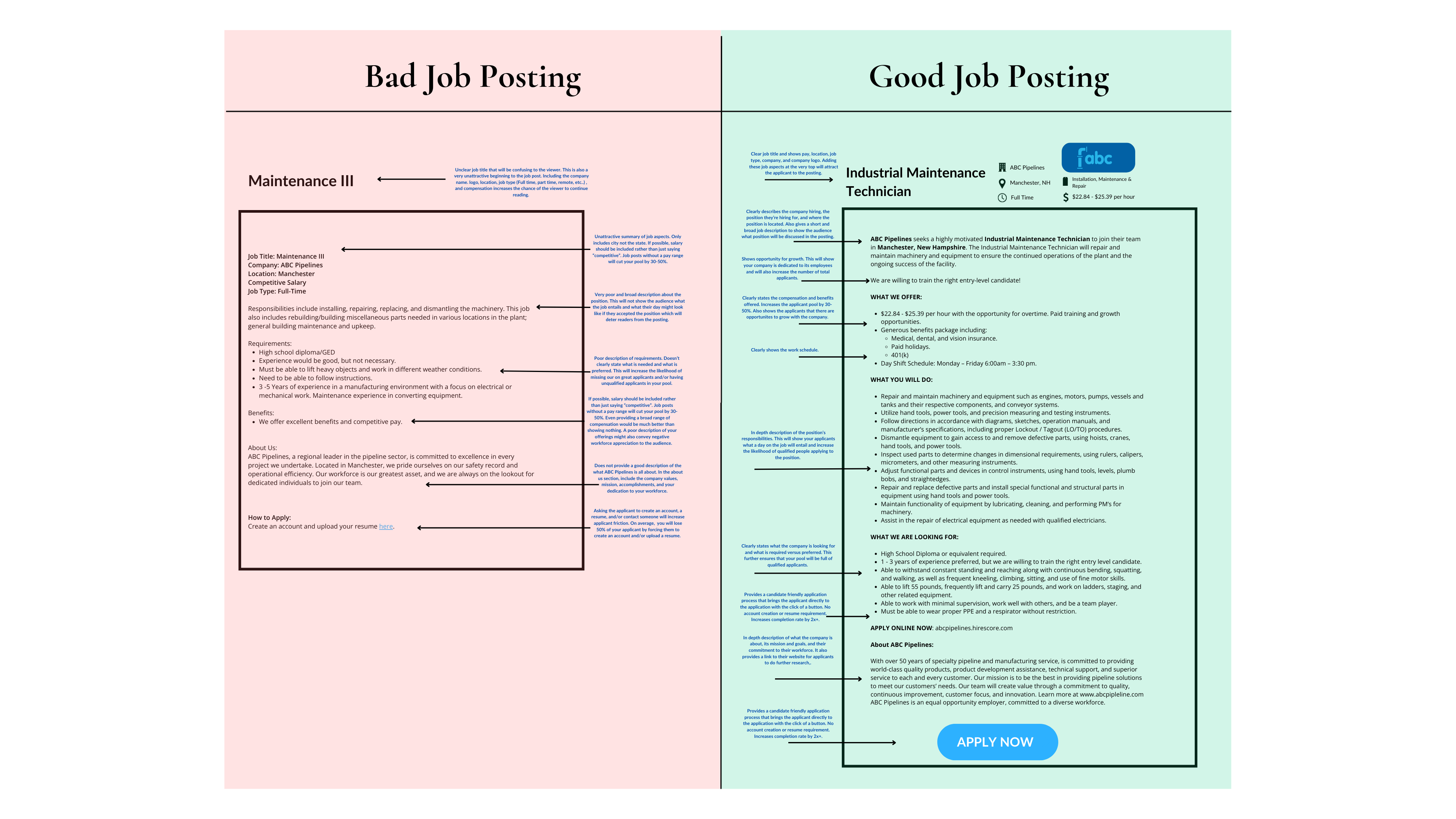
A practical guide for HR leaders, recruiters, and hiring managers
Job descriptions are often treated like an afterthought — just a list of tasks, requirements, and a “competitive salary” line at the end. But here’s the truth: your job description is one of the most powerful tools you have for attracting and retaining talent.
A bad posting can turn away qualified candidates before they ever apply. A good one not only brings in stronger applicants but also sets clear expectations that reduce early turnover.
As we move into 2026, job seekers expect clarity, transparency, and authenticity in job ads. Let’s break down what makes a job description bad vs. good (with concrete examples) and give you a 10-point checklist you can use for every role.
A “bad” job posting usually looks something like this:
The result? Candidates either scroll past, feel unqualified, or assume you’re hiding something. And the ones who do apply often churn early because the job wasn’t what they expected.
Here’s what sets a strong posting apart:
Candidates want to know: Where is the job? How much does it pay? What’s the schedule?
Instead of leading with “Responsibilities include…,” hook candidates with why the role matters. Example:
“Join our Maintenance team to keep production lines running — prevent issues, solve problems fast, and support a safe, efficient plant.”
Don’t just say “excellent benefits.” List them: medical/dental/vision, PTO, retirement match, training stipends, etc.
Mixing them together creates confusion.
Top candidates want to know how they’ll advance. Spell it out: “Eligible for lead role bids after 12 months” or “Cross-training available in XYZ system.”
The longer or clunkier your apply process, the more candidates drop off.
Skip the clichés like “we’re like a family.” Share something real: weekly team huddles, mentorship programs, diversity initiatives, or community projects.
It builds trust, widens your pool, and shows commitment to fairness.
Before you post a role, ask: does my JD include…
If you hit all 10, you’ll attract more applicants — and the right ones.
A good job description doubles as a realistic job preview. When people know what they’re signing up for, they’re more likely to stay. That means fewer 90-day quits, stronger engagement, and better long-term performance.
At HireScore, we’ve built a process that takes the guesswork out of job descriptions. Here’s how:
The result? A bigger, better-quality applicant pool — often 2x to 10x what companies were getting before.
As we head into 2026, the companies that win talent will be the ones that stop treating job descriptions like paperwork and start treating them like marketing.
Write them clearly. Structure them thoughtfully. Be transparent about pay, growth, and culture. And above all — make it easy for candidates to see themselves succeeding in the role.
Do that, and your job descriptions won’t just attract applicants — they’ll attract the right applicants who stay and thrive.
👉 Want to see how HireScore can help you build better job descriptions and fill roles faster? Schedule a demo.